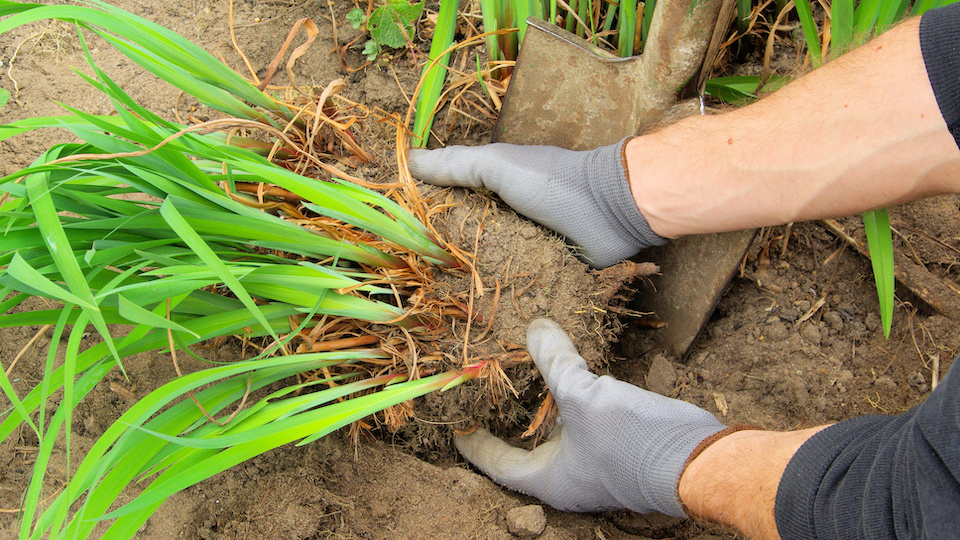You’ve probably heard of dividing perennials and may have been intimidated by the thought of digging up perfectly healthy plants. If you are just starting your garden, you have a few years before your perennials need to be divided, so don’t worry about it just yet, but if you have established plants, it’s time to grab your sharp spade and get to work. Don’t worry, dividing perennials is actually incredibly easy and is a great way to keep your plants healthy and flourishing.
Why divide perennials
Though you may be happy with a large mass of a single perennial in your garden, dividing it and sharing the love in other locations can make your plant happier and healthier. When a perennial gets to a certain size, the root system may be stretched too thin, and not enough essential nutrients and water are getting delivered to each section of the plant. You’ll be able to tell when it’s time to divide your perennials if they develop bald spots, become leggy, or stop producing as many blooms as they once did.
Dividing encourages new growth and can help keep unruly perennials contained, which is important for fast-growing plants that like to take up any available space. We also love perennial division because it is a way to get more plants in your garden for free! Set up an exchange system with your gardening friends and trade your divisions. That way, you’ll all be able to get new plants without spending a dime. You can even offer to help each other dig up and divide perennials and turn it into a fun social gathering rather than a somewhat grueling chore.
How to divide perennials
Step 1: Know when to divide
Divide spring-blooming perennials in the fall and fall-blooming perennials in the spring for optimal success. When dividing in the fall, be sure to replant the divisions at least six weeks before the first expected frost date. This will ensure that the plant has enough time to put down roots before the chill of winter sets in. Choose a cloudy day after a rainstorm, or when the soil is still slightly wet, this will help prevent root-shock and make the ground easier to work with. If it hasn’t rained recently, give your plants a good drink before dividing.
Step 2: Dig up the plant
Though you can slice off sections of the plant while it is still in the ground with a sharp spade, it is best to remove the entire parent plant and divide it once it is out of the ground. Before you do, make sure to trim back the leaves and foliage to about 6 inches to make handling and transportation easier. This foliage will likely die off anyway, so this also prevents unsightly dead leaves.
Step 3: Divide
Use your hands or a shovel to break the plant apart into smaller sections gently. Be sure that each division has a healthy supply of roots and a few strong leaves. Keep in mind; some perennials will have a natural division, meaning they will be much easier to pull apart. Others will often have a tangled mass of roots that requires a little more force. In this case, use two garden forks back to back to help pry the roots apart or slice through them with garden shears.
Step 4: Keep them moist
Be sure to keep your divisions in a shady, wet environment until you are ready to plant or give away. A large bucket with a few inches of water at the bottom is great for a temporary solution. Or you can tie a garbage bag around the root ball to keep the moisture from escaping. Regardless, it is a good idea to plant divisions soon to help ensure that they will grow into healthy and vibrant plants.
Best perennials for dividing
Though most perennials will flourish if you divide them every few years once mature, these flowers will do particularly well under the stress of division and are the gifts that keep on giving.
- Yarrow
- Bugleweed
- Artemesia
- Anthemis
- Aster
- Coreopsis
- Geranium
- Daylily
- Iris
- Hosta
- Shasta daisy
- Bee balm
- Phlox
- Sedum
- Black-eyed Susan
- Bleeding heart
- Viola
Remember, not all perennials like to be divided. Be sure to do your research before dividing the plants in your garden.
Happy dividing! Let us know which plants you love to divide in the comments below!
-Susan Patterson




